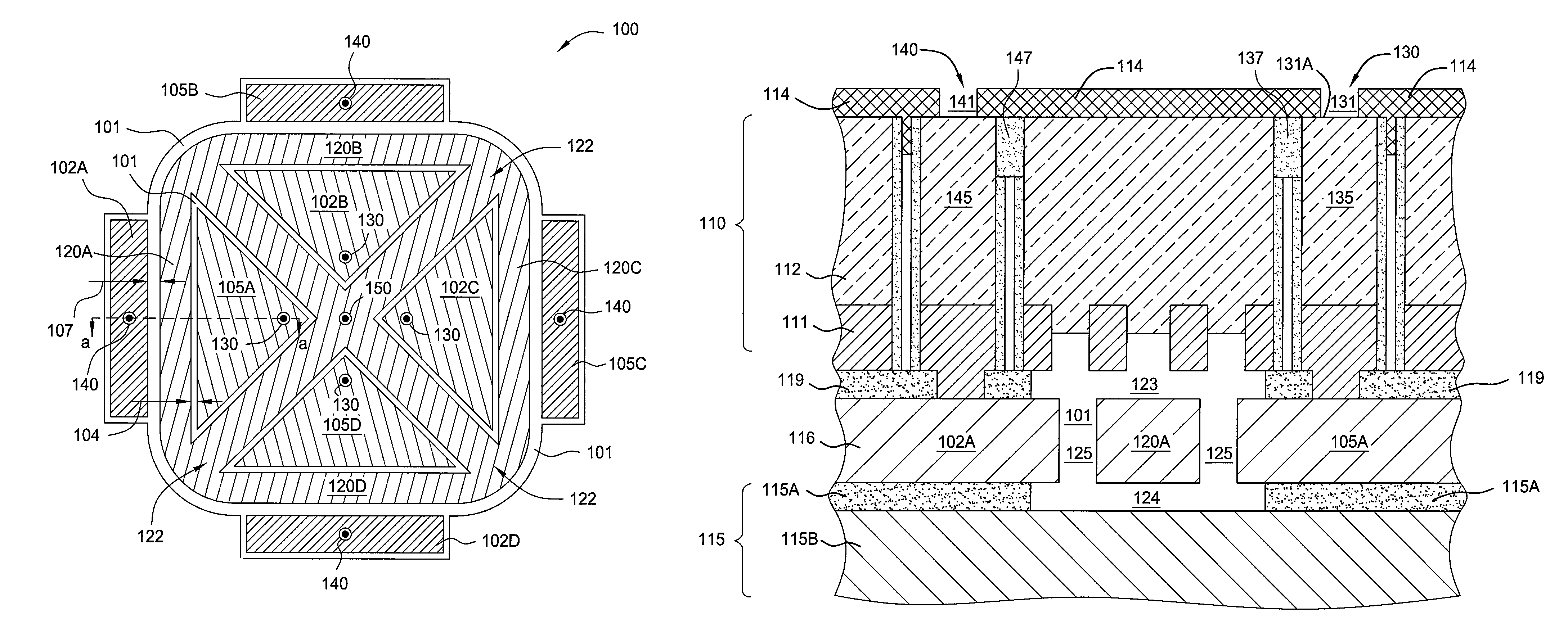Ground strap for suppressing stiction during MEMS fabrication
a technology of ground straps and nems, which is applied in the manufacture of microelectromechanical systems, electrical apparatus, microstructural devices, etc., can solve the problems of unwanted contact, mems devices so produced are susceptible to experiencing stiction,
- Summary
- Abstract
- Description
- Claims
- Application Information
AI Technical Summary
Benefits of technology
Problems solved by technology
Method used
Image
Examples
Embodiment Construction
[0021]The inventors have discovered that stiction occurs during the fabrication of a MEMS resonator due to a relatively high potential difference developing between a fixed structure contained in the MEMS resonator and a resonating member also contained in the MEMS resonator. The fixed structure may be an electrode structure or other structures proximate the resonating member, such as the conductive layer above the resonating member and the conductive substrate below the resonating member. In either case, this potential difference produces high vertical and / or lateral electric fields, causing exaggerated deflection of the resonating member. The magnitude of these charge imbalances results in a potential difference that may be substantially higher than the design voltage of the MEMS resonator. In the latter event the resulting deflection caused by such charge imbalances may be greater than the intended deflection of the resonating member. Hence, the resonating member may be deflected...
PUM
 Login to View More
Login to View More Abstract
Description
Claims
Application Information
 Login to View More
Login to View More - R&D
- Intellectual Property
- Life Sciences
- Materials
- Tech Scout
- Unparalleled Data Quality
- Higher Quality Content
- 60% Fewer Hallucinations
Browse by: Latest US Patents, China's latest patents, Technical Efficacy Thesaurus, Application Domain, Technology Topic, Popular Technical Reports.
© 2025 PatSnap. All rights reserved.Legal|Privacy policy|Modern Slavery Act Transparency Statement|Sitemap|About US| Contact US: help@patsnap.com



